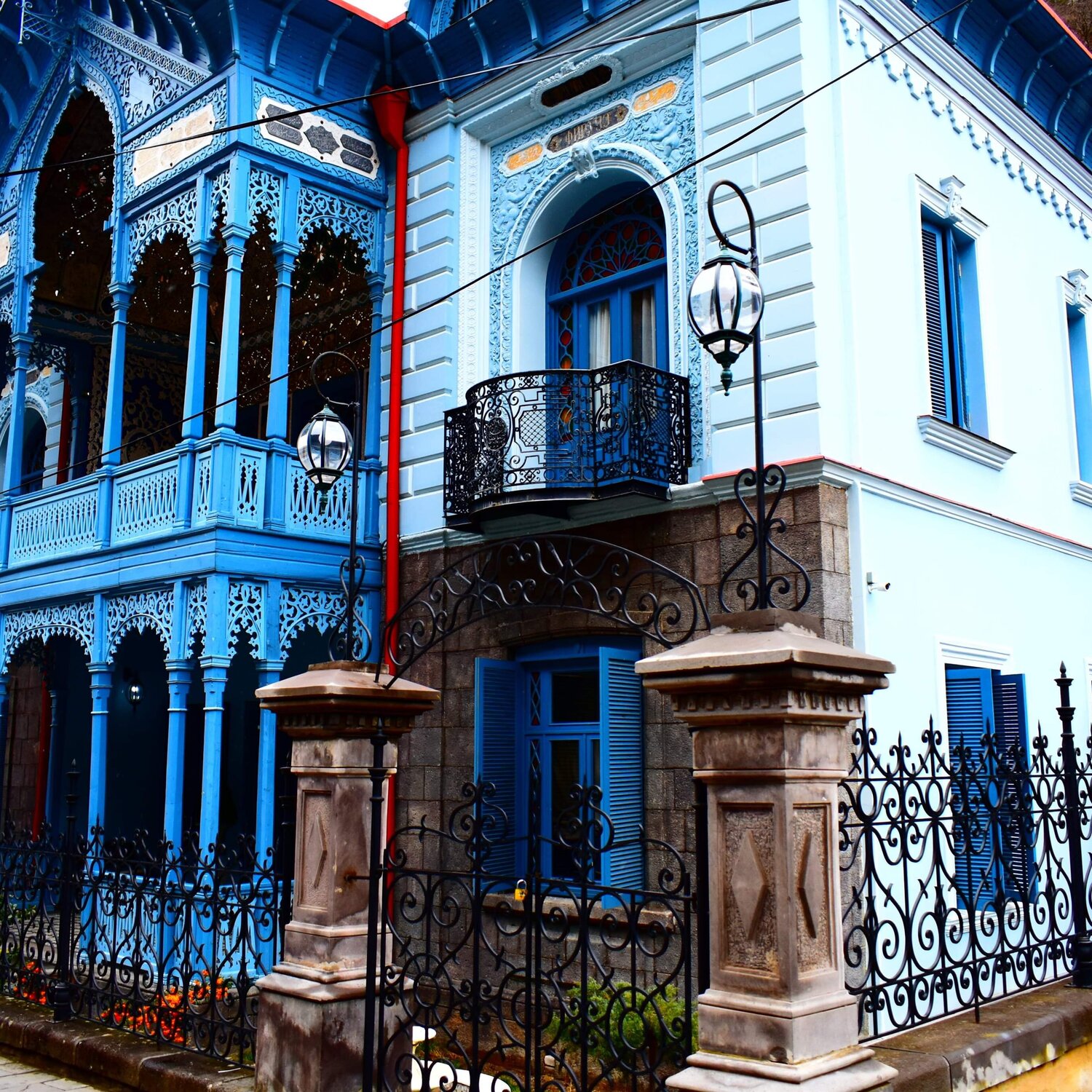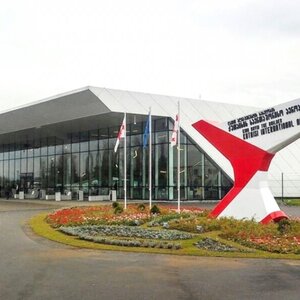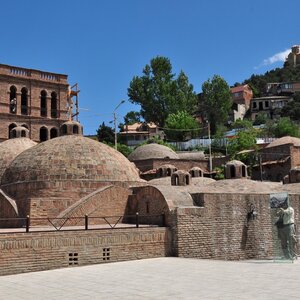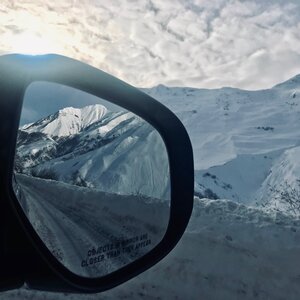Its vegetation consists of rare species of pine, fir, spruce, oak, elm, chestnut and other valuable tree species. The territory of the National Park itself is about 7% of the total territory of Georgia.
Borjomi water
The main thing Borjomi is famous for is its mineral waters. It is believed that it was found healing water that led to the founding of the resort. Despite the fact that it was granted the status of a city in 1918, the water here has been used for treatment since ancient times — at a depth of 7 meters the remains of stone baths from the 1st century BC have been found.
The composition of mineral waters of volcanic origin includes carbon dioxide and sodium waters. Unlike other waters, Borjomi waters are not cooled underground and reach the surface warm (38—41° C). Enriched with 60 different minerals from the Caucasus mountains, they are used for drinking and spa procedures.
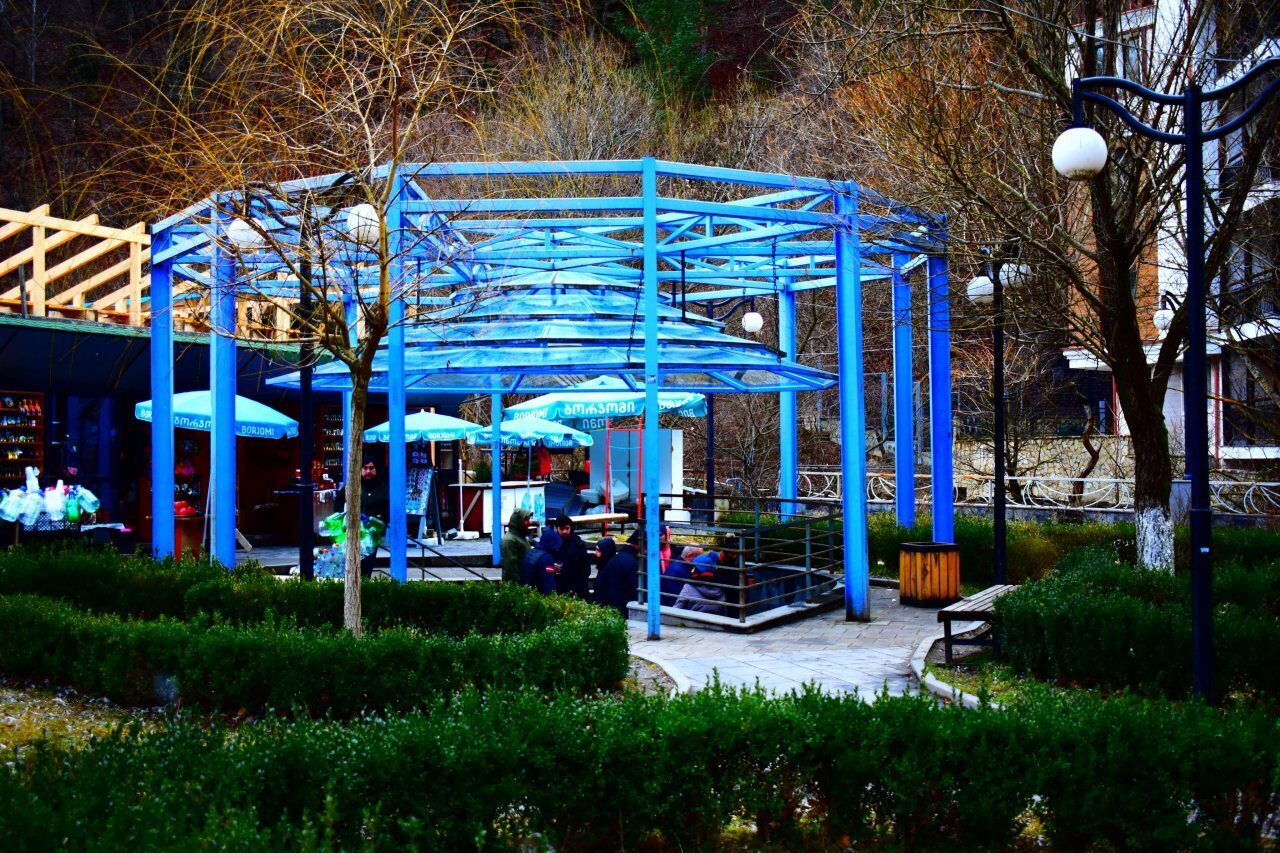

Climate and treatment in Borjomi
Borjomi is located in a valley, therefore it is protected from sudden temperature changes and is characterized by unique natural conditions. There is fresh mountain air and moderate temperature. Summers are warm and winters are mild. The crystal clear air, saturated with pine forest esters, ensures a perfect vacation.
Borjomi waters are used for treatment of different diseases: heart and vessels, stomach, respiratory organs. The season is all year round, although June-October is the best time for therapy. There are many sanatoriums and hotels in Borjomi, and almost all of them offer therapeutic courses, baths and special procedures to maintain and restore health.
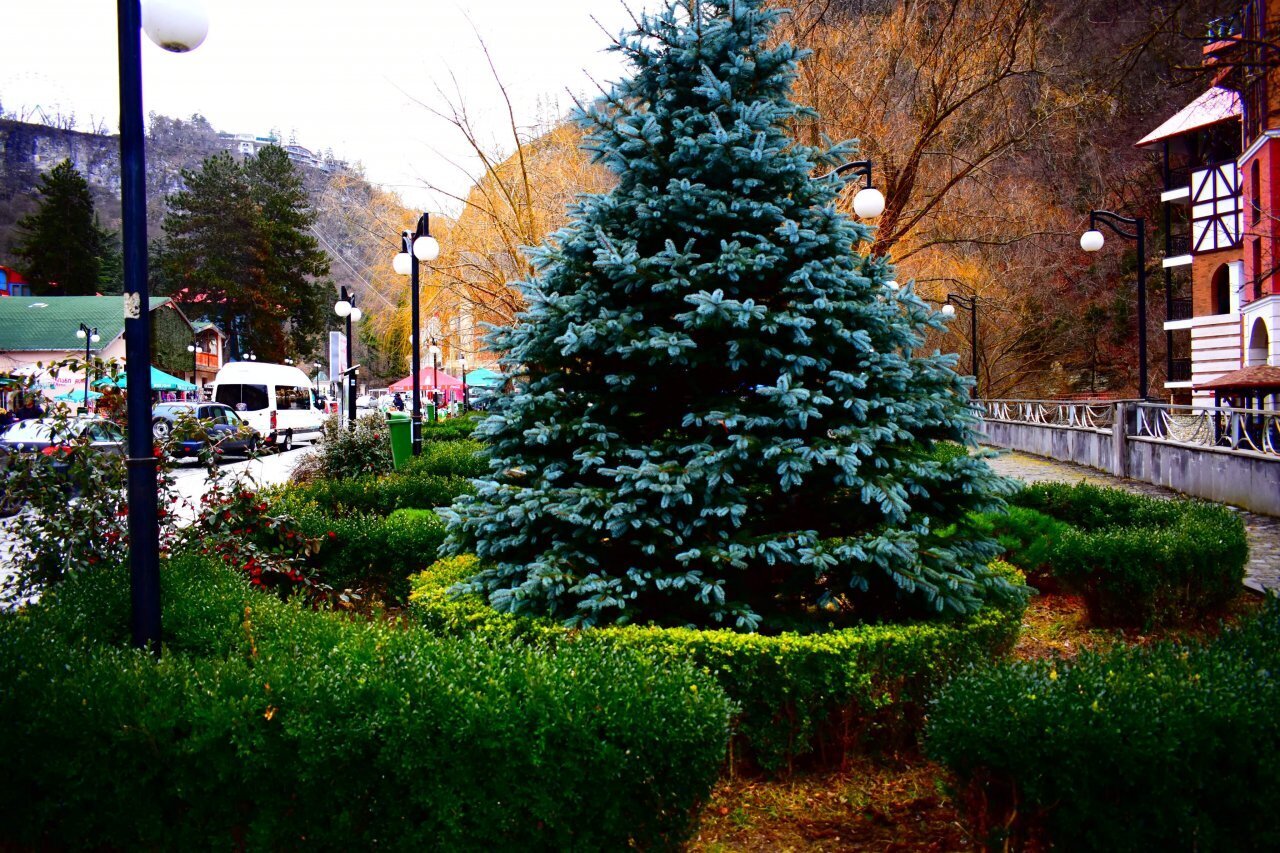
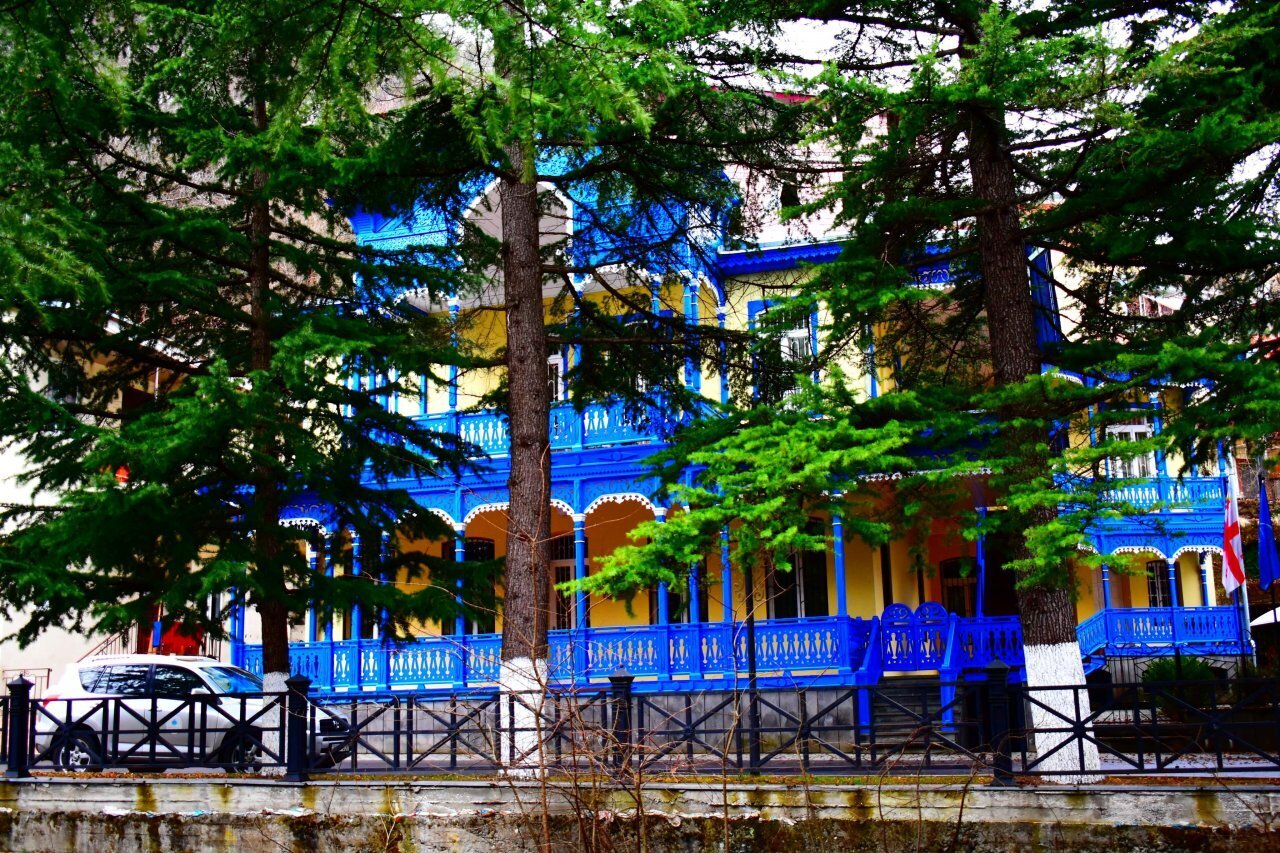
Best sanatoriums and resorts in Borjomi
There are almost 200 resort hotels in the city. I will share which ones are considered the best among the locals.
- Hotel Borjomi Likani Health & Spa Center is a 5* hotel with rooms from 100 €.
- Hotel Borjomis Kheoba — sanatorium with vouchers from 7 days.
- Borjomi Palace is a 4* hotel with rooms from 52 €.
- Crowne Plaza Borjomi is a 5* hotel with rooms from 110 €.
- Golden Tulip Borjomi — former «Firusa» and now a 4* spa hotel with rooms from 90 €.
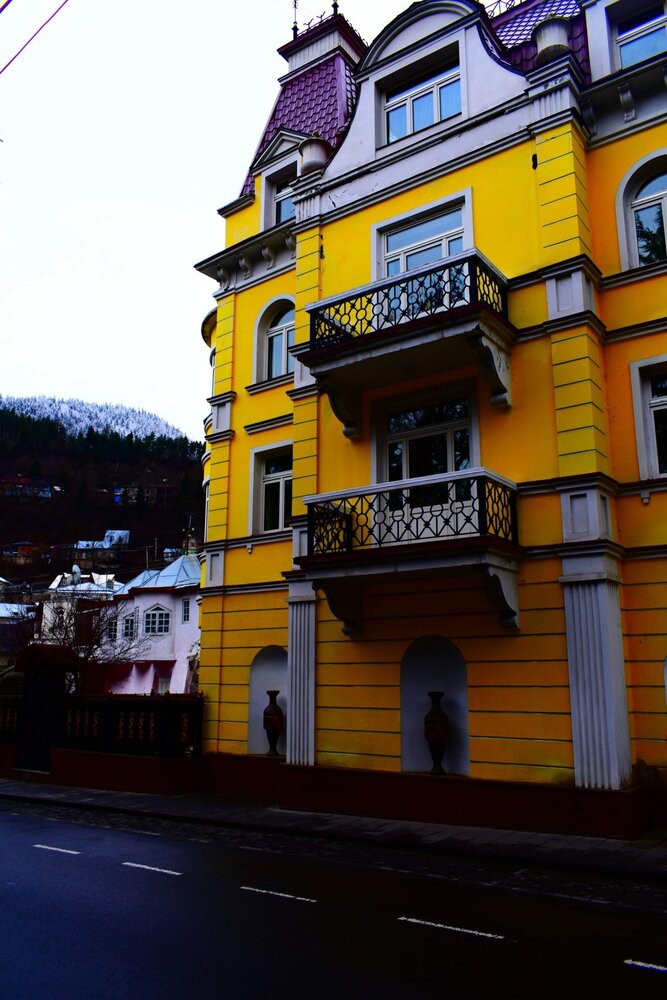
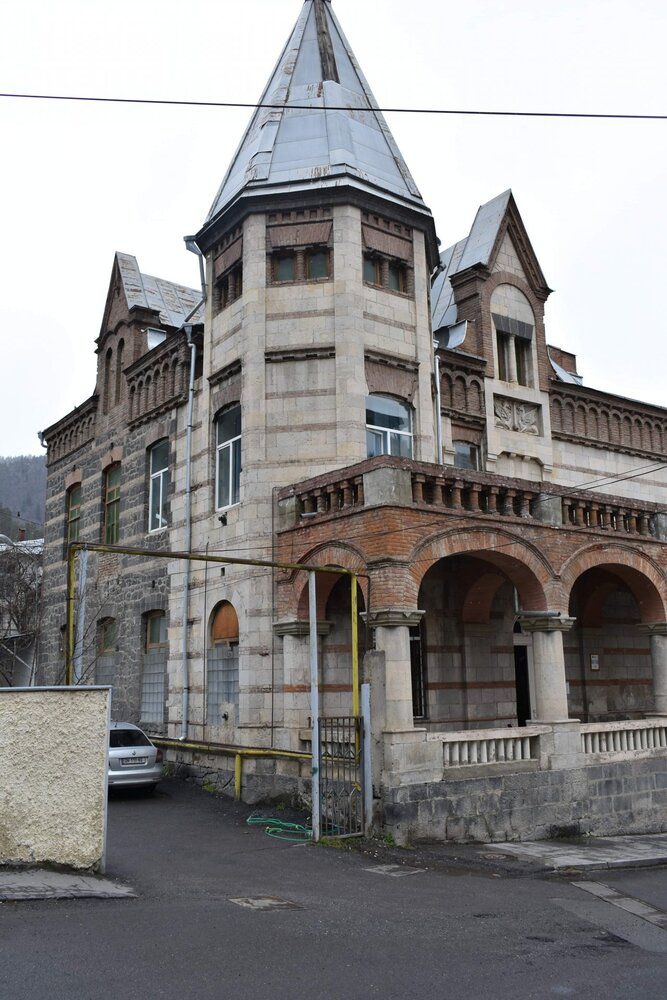
What to do in Borjomi
Besides medical institutions, Borjomi has about 200 historical buildings, monuments and other sights. I will tell you about the most interesting of them. Some of them are located far away from the city, but in the break between spa procedures and therapeutic relaxation in the Borjomi Natural Park you can reach them by bus or rental car. How to rent a car in Georgia.
Mirza-Riza Khan’s summer house
One of the most recognizable buildings in Borjomi is the dacha of the Iranian consul in the Caucasus, who served in 1889—1894. His name is carved on the facade of the building — Mirza-Riza Khan. The building is built in oriental style, with characteristic elements. Especially beautiful is the balcony decorated with turquoise stones and lace facade. The house was created by Iranian craftsmen. Multicolored glass, mirrors, stones are rarely seen in Georgia details of architecture.
Later the building was a hotel, museum and Firuza sanatorium. Today, the Golden Tulip Spa Hotel operates here, but the owners carefully preserve the appearance and historical identity of the building.
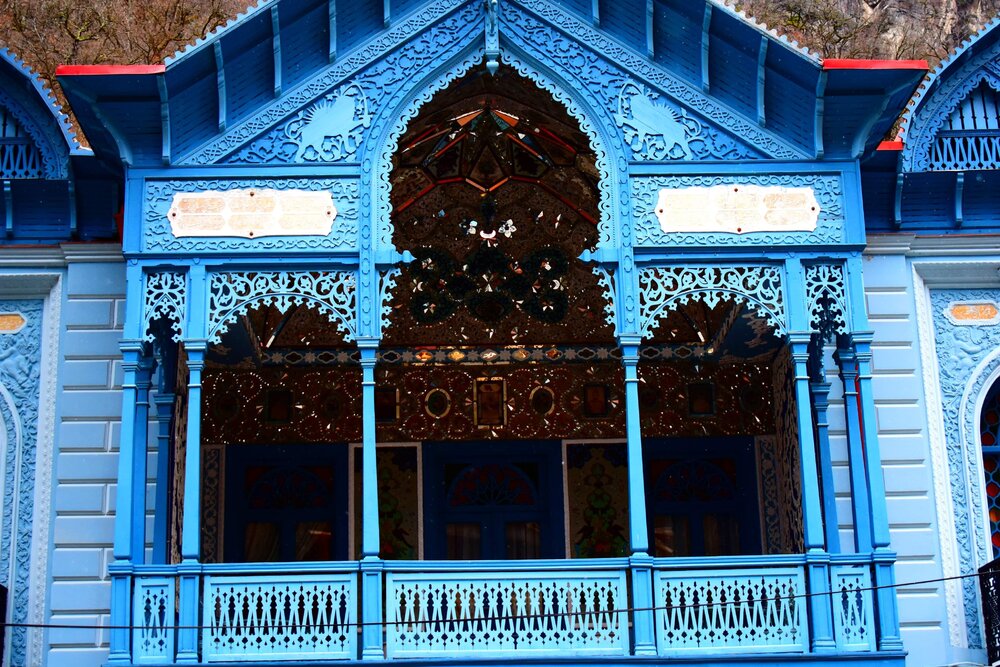
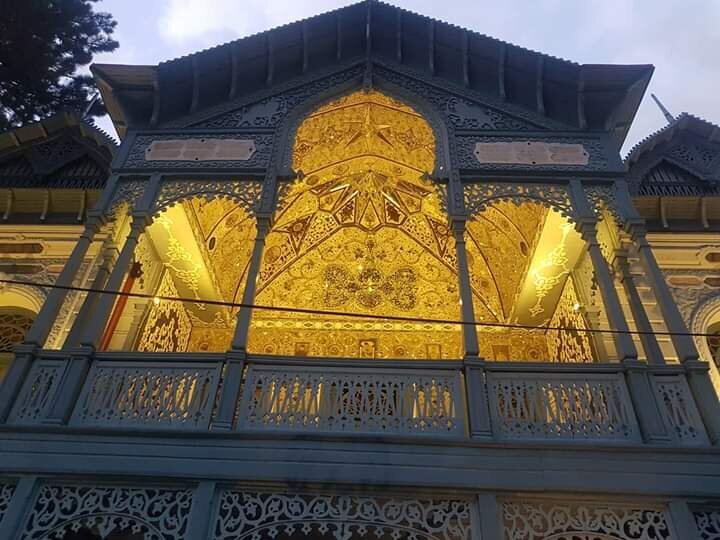
Central Park
The Central Park starts at the Borjomula River, which flows through the city center along the main tourist street — April 9 street. Entrance is paid, through a special turnstile.
Borjomi Park is an evergreen territory of 20 hectares. Here you can taste mineral water from several springs, take a walk, relax in cafes, have fun on attractions, swim in the pool with healing water. At the end of the park there are historical sulfur baths. Active tourists are offered a 2-hour rafting trip. For a deeper study of local history, you can visit the Museum of Local History, which is located at the entrance to the park.
- Entrance to the park is from 09:00 to 18:00.
- The cost is 2 GEL, children under 8 years old are free of charge.
- Single admission to the pool is 15 GEL.
- Rafting — 60—70 GEL.
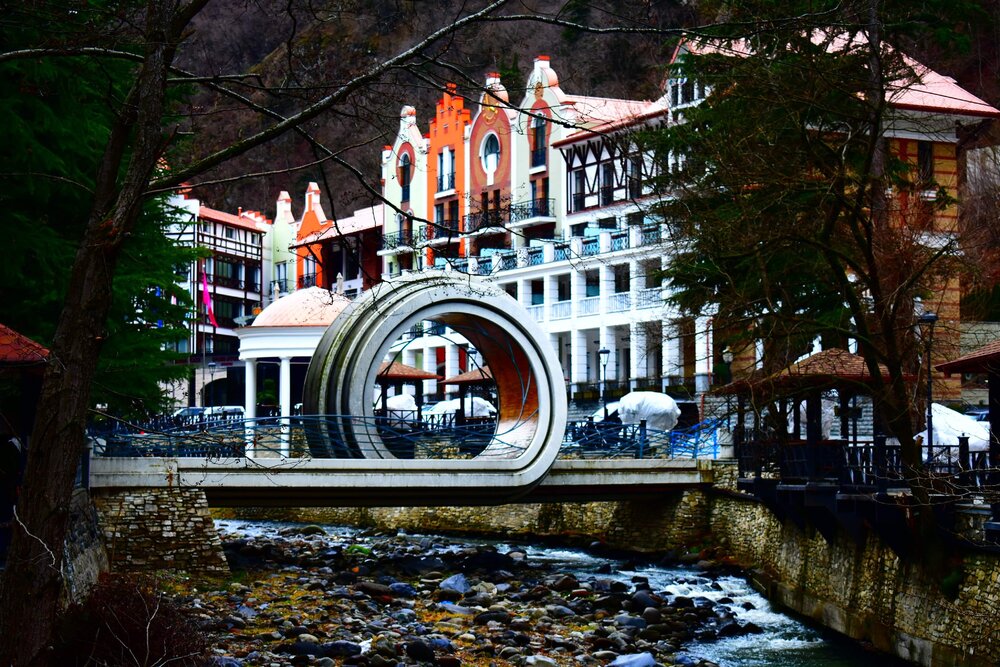
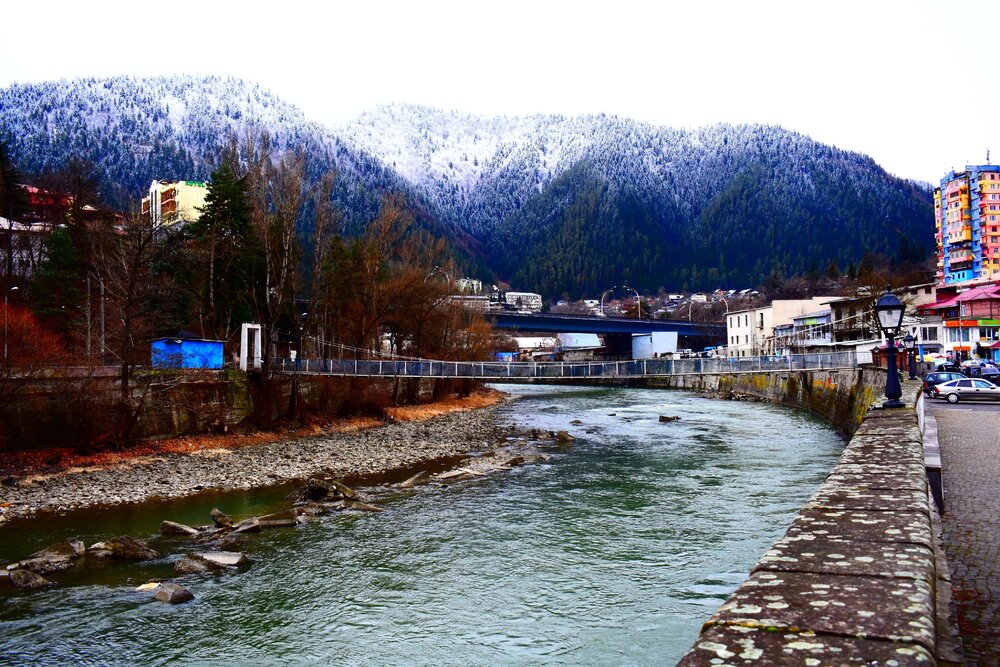
cable car
If you’ve been to Borjomi and haven’t seen the city from the highest point by taking the cable car up there, it means that you haven’t seen the city. The cable car connects Borjomi Park with one of the highest points of the city — the plateau. The cable car has been in operation since 1962, and new cars were added in 2006.
- The distance between the stations of the ropeway is 376 meters.
- Travel time is three minutes.
- Distance from the highest point to the ground — 116 m
- The cable car can transport up to 25 people at a time.
- The cost is 4 GEL per person (one way). If you wish, you can walk back down on foot, walking no more than 10—15 minutes.
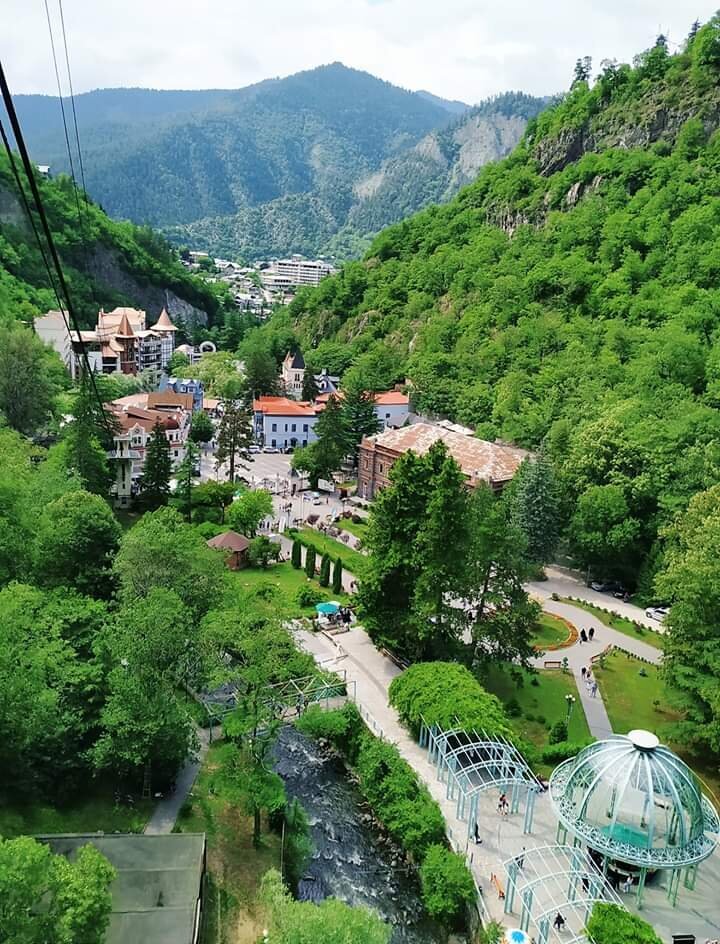

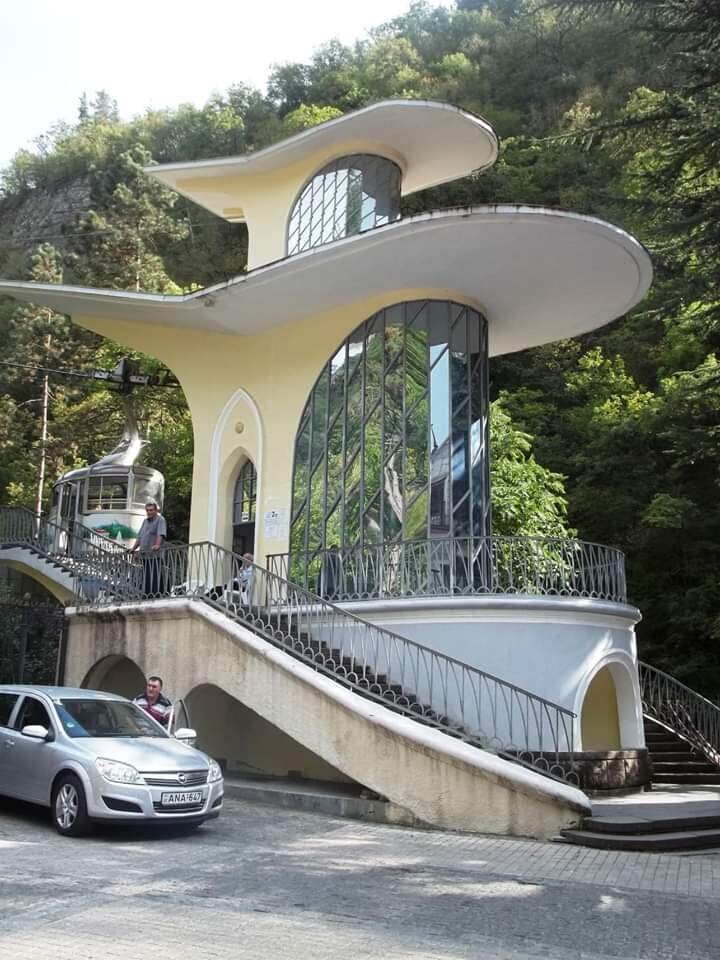
Eiffel Bridge
Not everyone knows that in Borjomi there is a bridge created by Alexander Gustave Eiffel, the author of the Eiffel Tower. The bridge was built on the narrow gauge railroad Borjomi-Bakuriani, on the Tsemistskali River. The uniqueness of the bridge is that it was installed without welding.
Since 1902 a small train «Kukushka» has been running across the bridge, which brings passengers from Borjomi to Bakuriani.
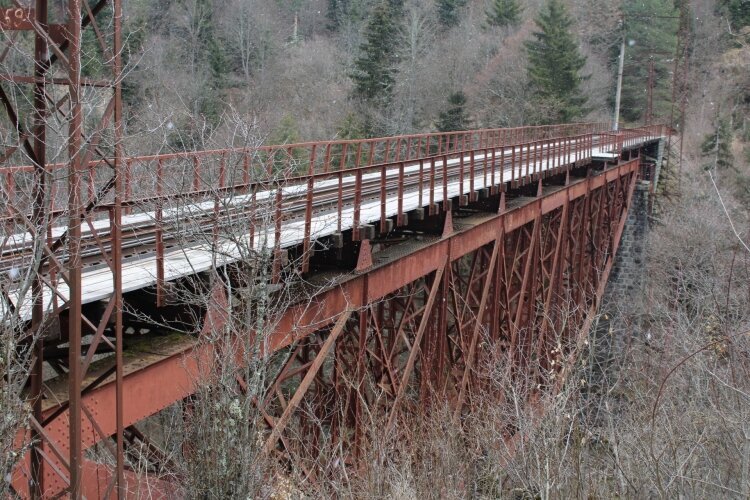
Timotesubani
In a village 17 km from Borjomi, with a unique natural landscape, the Church of the Assumption, built in 1195 on the ruins of a large monastery, has been preserved. Besides its age and beautiful architecture, the treasures of the temple are unique frescoes. It is hard to believe, but the paintings of the church have been preserved since the time of its construction. On the walls inside the temple you can see the works of famous Georgian masters. Fragments of a stone church and the northern part of a large monastery of the X–XI centuries have been preserved on the territory of the temple.
Timotesubani is located near Tsagveri. You can get there from Borjomi by mini-buses going from the central square near the park in the direction of Tsagveri.
- The ticket is 1.5 GEL.
- Departure times are 10:30 a.m., 1:30 p.m., and 5 p.m.; travel time is 25—30 minutes.
- Entry to the temple grounds is free of charge.
Green Monastery
The name itself suggests that you will find yourself in a beautiful and peaceful place among the forest, 10 km from the Central Park. It is one of the oldest buildings in Georgia, dating back to the IX–X centuries. In the XVI century the monastery of St. George was invaded by Shah Tamaz, who destroyed it, killed and tortured dozens of monks. On the territory of the temple flows a small river with a stony bottom. If you look closely, you can see that the stones in it are colored red. It is believed that this is the blood of the murdered monks.
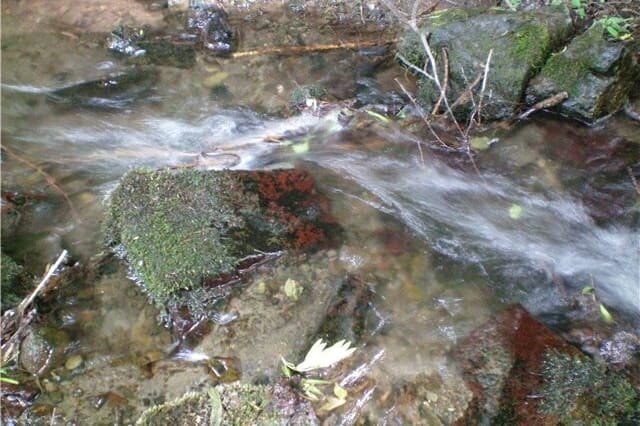
For centuries the monastery was abandoned, but in the 80s of the 20th century the temple was restored and in the early 2000s the service was resumed.
The easiest way to get here is by car (cab — 10—15 GEL), but minibuses also run from the center of Borjomi.
- Direction — Borjomi — Kvabiskhevi.
- The cost is 1 GEL.
- Departures are at 12:00 and 14:00 and travel time is 20 minutes.
- From the road to the monastery itself is a 15—20 minute walk along a path in the woods.
- Admission is free, but the monastery is closed to visitors after 18:00.
Romanov Palace in Likani
A special place among historical monuments in the Borjomi Gorge is occupied by the Romanov Palace in Likani village, 5 km from the center of Borjomi. It was built by order of Tsar Nicholas Romanov in 1892—95 by architect Leonty Benois. Unique exhibits are kept in the palace: a table presented by Napoleon, an armchair from the Shah of Iran, a walnut table personally made by Peter the Great. In the billiard room there is still a table belonging to the Romanovs. Almost all things here are unique antiques. A beautiful garden with rare species of plants is planted around the palace.
Now the palace can only be viewed from the outside, as it has been undergoing restoration work for several years and there is no information about the opening yet.
This plan is enough for 7—10 days of interesting vacation in Borjomi. And if you still think that rest in sanatoriums and «on the waters» — is only for pensioners, then take a ride on a cable car, ride bicycles in Borjomi park or go rafting — and you will be convinced that young and active people also have something to do here.

